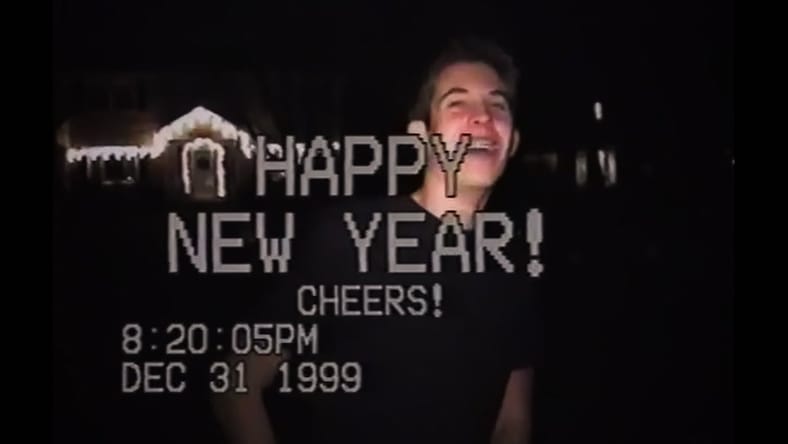
Brian Becker and Marley McDonald’s new documentary Time Bomb Y2K, created entirely from five years of archive footage leading up to January 1, 2000, unearths a treasure trove of material that offers a new perspective on Doomsday Christians and New Age response to the turn of the millennium.
Time Bomb Y2K recently screened at deadCenter Film Festival in Oklahoma City, ahead of its HBO debut on December 31. Becker and McDonald drew from over 750 hours of footage to draw audiences into the parallels between Y2K and our present moment. The filmmakers asked people, in partnership with the non-profit Center for Home Movies, to share their personal recordings of December 31, 1999.
“We wanted the documentary to mirror the story of Y2K unfolding in the world. It started as a technical problem and spiraled into the social problem,” Becker tells MovieMaker.
What Was the Y2K Problem, Again?
Here’s a refresher: the trouble of Y2K started in the 1970s when computers ran off of Hollerith cards, which were basically punch cards that could hold 80 characters of data. Computers of the 1970s to 1990s were enormous machines that filled entire rooms, so a decision was made early on to use two-digit data fields to represent years as a space-saving measure. The fear was that computers would interpret January 1, 2000 as January 1, 1900 and shut down entire industries worldwide.
Also Read: Asteroid City Cinematographer Robert Yeoman on Why He and Wes Anderson Never Settle
It wasn’t until Canadian computer engineer Peter de Jager brought the looming technological disaster to the attention of world governments in the mid-1990s that action was taken. Then President Bill Clinton appointed John Koskinen as his “Y2K Czar” to fix the issue. Kroskinen created hundreds of thousands of jobs to rewrite bad code.
“Computers just entered the homes of half of America,” says Becker. “The process of adjusting date fields felt extremely esoteric and difficult to grasp, but in reality, it was a pretty simple code fix.”
Nostalgia
However, the cultural impact was impossible to predict or manage.
“The world of technology creates this interconnected, very complex system that’s almost impossible entirely grasp,” says McDonald. “It creates nostalgia for simpler times when we understood the world that we lived in and we knew the people around us and those were our connections.”
Time Bomb Y2K features people on the left and right with utopian-like enthusiasm about the world ending.
“They wanted the world to end because in their minds nothing could be worse than the current world,” says Becker. “On the right, militia guys wanted to go back to simpler times with their communities, have their guns, and be keepers of the land. On the left, the New Agers wanted to build a utopian society from the ashes of the overly technical present.”
There’s a scene with woman who runs a Y2K community meetup because she believes, like Mother Teresa, that America is the loneliest country on the planet. “If gathering with your community is what comes out of the Y2K crisis, then she doesn’t think that’s a bad thing,” says McDonald.
The filmmakers kept returning to her sentiment as a throughline to understand the outlier responses to Y2K. They believe it’s a thought that’s still cycling through the culture.
“Things did happen on Y2K but they weren’t major and were fixed before anything bad could happen,” says Becker. “But people still have trouble letting go of predictions that are incorrect.”
“In our experience of interviewing people for research, those still prone to extreme beliefs have real trouble adjusting. They adjusted their predictions to make them fit into their worldview,” says McDonald.
Main image: A scene from Time Bomb Y2K
Share:

